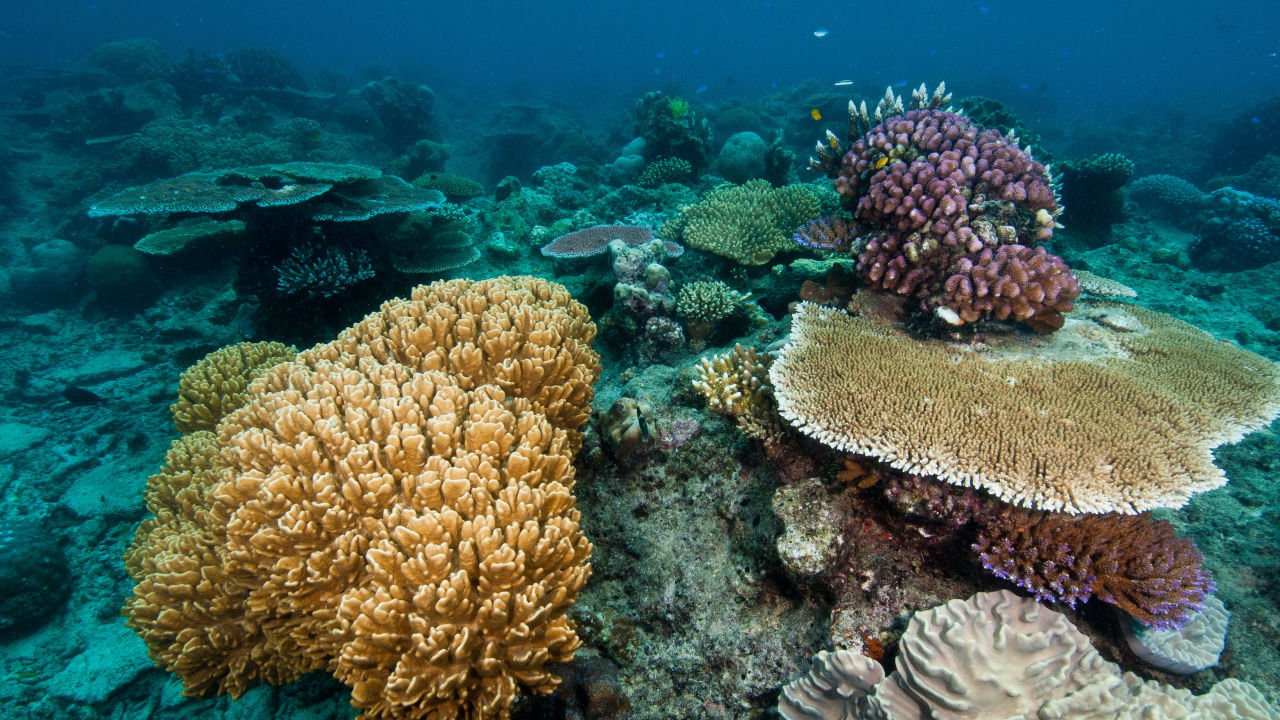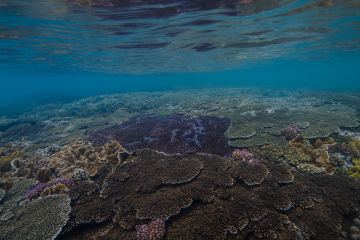Media Release ·
Coral DNA first a giant leap in search for super coral secrets

Scientists have achieved a breakthrough in the quest to discover what makes some corals the ultimate survivors in the face of climate change.
New research into the tiniest components of the world’s largest living organism, coral DNA, has yielded a world first that can be used to inform future coral reef restoration.
The world’s largest coral genomics sequencing project, the five-year Sea-quence project, has genetically sequenced a whole coral organism for the first time – the coral animal, the tiny plants (zooxanthellae) that live in its tissue, and associated microbes including bacteria and viruses – for the Porites lutea species, a type of massive boulder coral.
As well as the Porites lutea complex, the project’s researchers have successfully sequenced eight other forms of coral, two cultured Symbiodinium (zooxanthellae) species and a suite of additional, coral associated microbes, and are releasing all the unique genetic codes publicly to the global research community.
Great Barrier Reef Foundation Managing Director Anna Marsden said the Sea-quence project breaks new ground on a number of fronts.
“Scientists have long believed the secret to understanding why some corals survive and bounce back from threats like warming oceans is linked to their genes, just as human genetics is revealing the keys to different health issues for us,” Ms Marsden said.
“When the Foundation initiated this project with our partners, only two types of corals had ever been genetically sequenced, so this was a huge gap in our scientific knowledge in the quest to protect our Great Barrier Reef and coral reefs globally.
“We’ve now unlocked the genetic data for nine different forms of coral which is important because we know that different corals have different tolerances to stress. Scientists will be able to use this information to pinpoint which genes contribute to making some corals more resilient than others.
“Sequencing the whole coral organism for the first time is another giant leap forward because corals’ health and resilience depend on the symbiotic relationship between the coral animal and the plants and microbes that live within it.
“It’s possible that the key to long term coral survival could lie within the relationship between the host and its houseguests’ genes and we’ve just opened the door to testing that theory.
“Another step change has been achieved in developing a new methodology for analysing coral genomes faster, more efficiently and cost effectively.
“With around 600 types of soft and hard corals found on the Great Barrier Reef alone, the fact that we can now fast track the whole process and make it easier for other coral species to be sequenced, is a remarkable outcome.
“This project has really set the benchmark and platform for future coral genomics research to discover which corals are best able to survive and live with the impacts of climate change and why.”
The Sea-quence project is an initiative of the ReFuGe 2020 Consortium (short for Reef Future Genomics), a collaboration between the Great Barrier Reef Foundation, Australian Institute of Marine Science, Great Barrier Reef Marine Park Authority, Bioplatforms Australia, James Cook University, King Abdullah University of Science and Technology (Saudi Arabia), University of Queensland, and Australian National University, supported by funding from Rio Tinto, Bioplatforms Australia through NCRIS, the Fitzgerald Family Foundation and the Australian Government.
Great Barrier Reef Foundation Science Program Manager Dr Petra Lundgren said putting coral DNA ‘under the microscope’ was far more complex than anyone anticipated at the outset.
“When you consider that the human genome took 13 years to sequence and was only completed in 2003, what the ReFuGe 2020 Consortium has been able to achieve for corals in five years is quite incredible,” Dr Lundgren said.
“Coral genomes turned out to be much bigger and more diverse than we thought.
“The genetic information from just one coral species alone would fill 30,000 volumes of War and Peace!
“We also found out that two different species of coral are 100 times more genetically different than humans and chimpanzees.”
Great Barrier Reef Marine Park Authority Chairman Dr Russell Reichelt said, “The Sea-quence project is a great example of Reef scientists and managers working on new and innovative solutions to tackle threats to the Reef.”
“Sequencing the entire coral genome is a breakthrough that will enable a new suite of research to understand why these organisms respond the way they do to their environment, including threats. Understanding corals at this level will provide new options for management action to protect them into the future, just as sequencing the human genome has launched new approaches to medical treatments and therapies,” he said.
Bioplatforms Australia's General Manager Andrew Gilbert noted, "Significant recent advances in DNA sequencing technology have helped make this ambitious project a reality. We are very excited to deploy our network's genome sequencing capacity to such a critical challenge as coral reef resilience."
Ms Marsden said the Sea-quence project and ReFuGe 2020 collaboration illustrate the Foundation’s role as a catalyst to ensure there is a Great Barrier Reef for future generations.
“By bringing together experts from different fields and organisations and securing the required funding, the Foundation is able to make ambitious, large-scale projects for the Great Barrier Reef like this a reality.
“Coral researchers from all over the world will now be able to freely access the information generated by this project and we look forward to the results being used to fuel more discoveries to benefit our Reef as well as coral reefs globally.”
The GBR 9 – the nine Great Barrier Reef coral genomes including the first whole coral holobiont – are now published on the open access Reef Genomics database at reefgenomics.org
Information about the project is available on the ReFuGe 2020 Consortium website at ReFuGe2020.com and also the Great Barrier Reef Foundation website.




